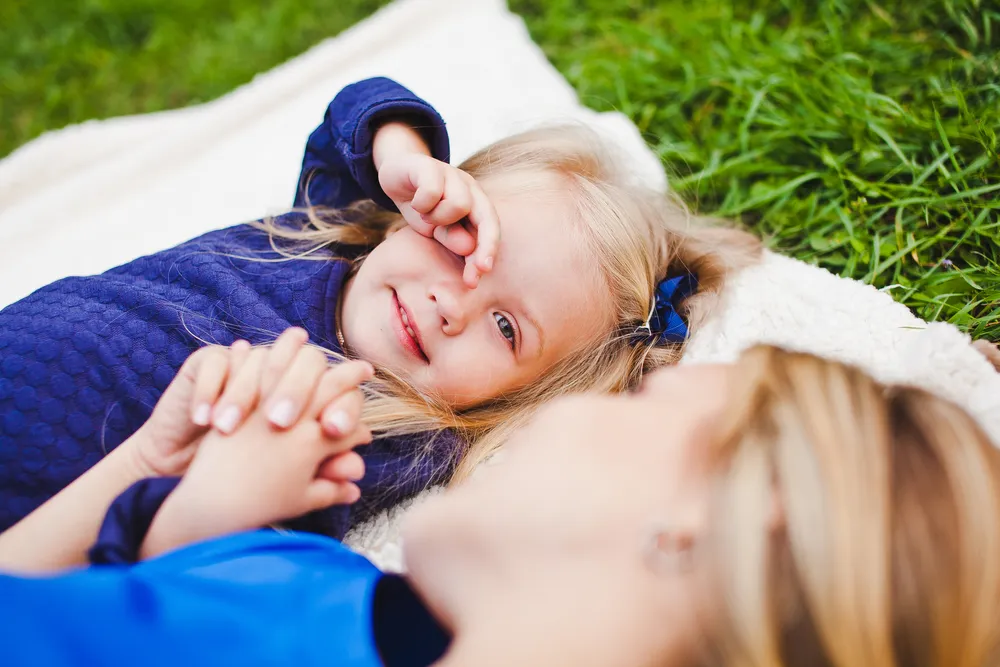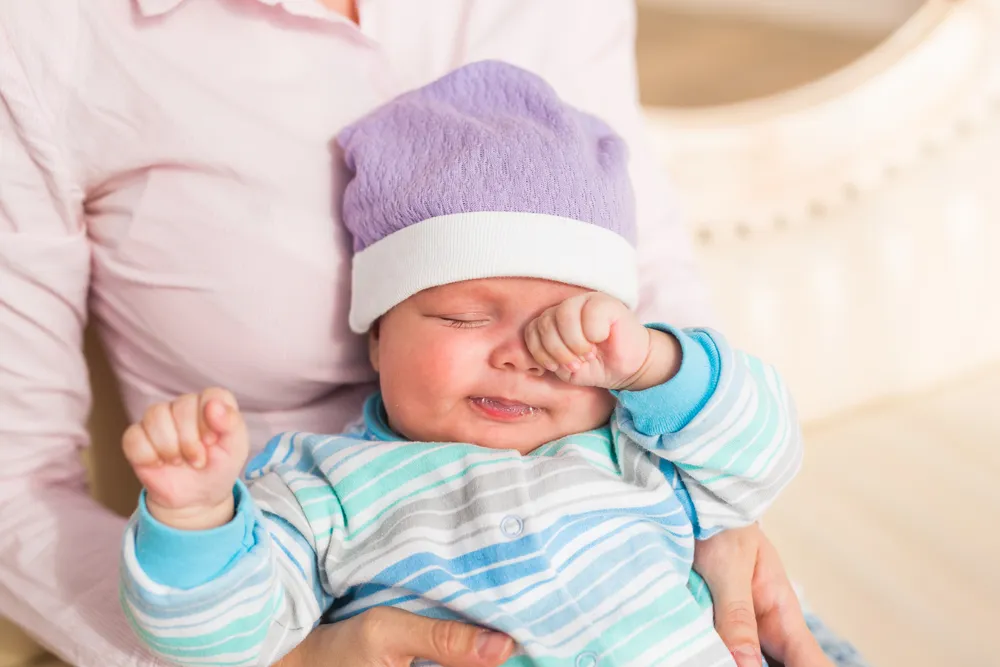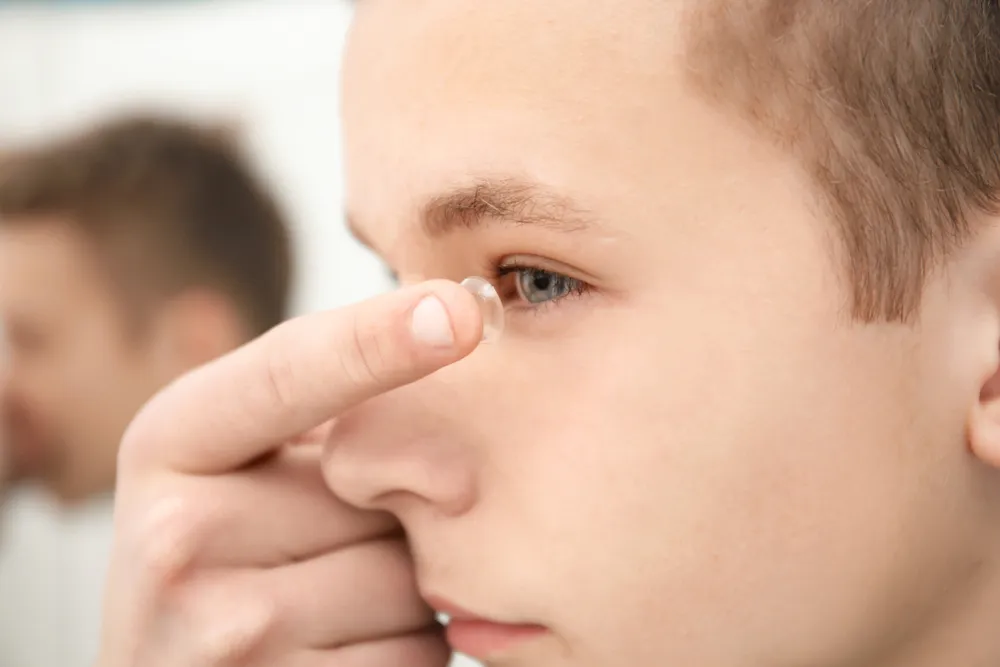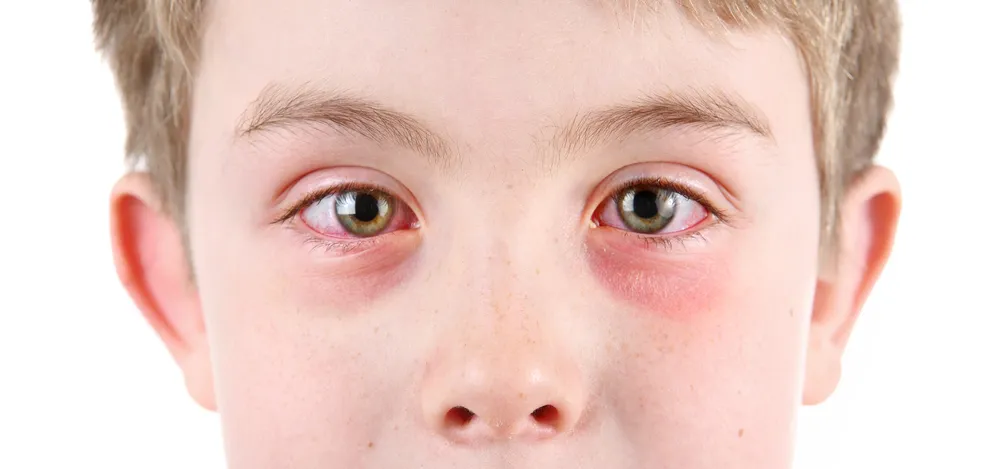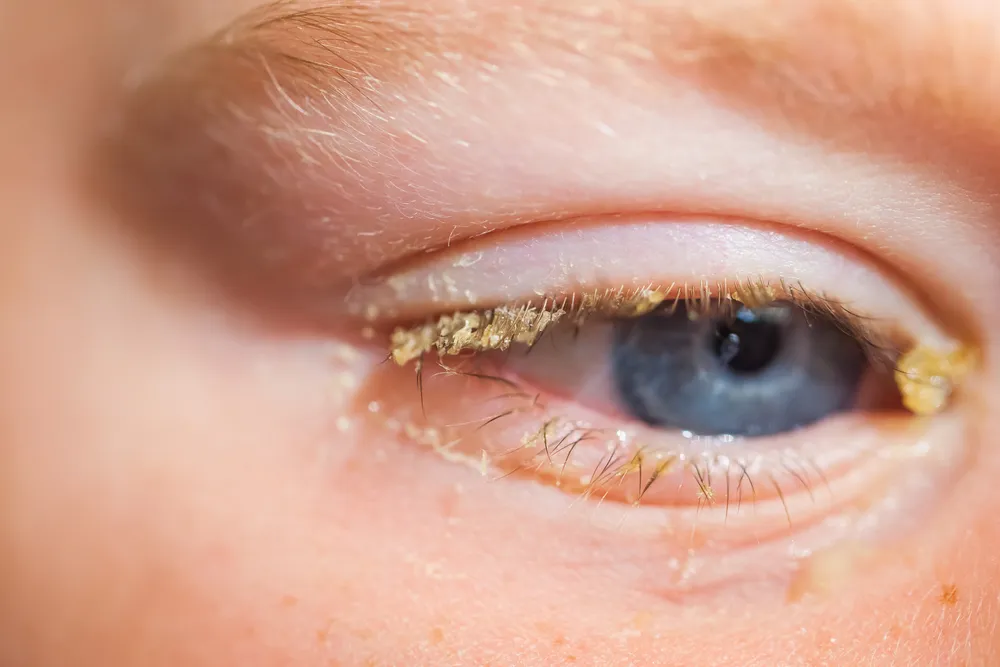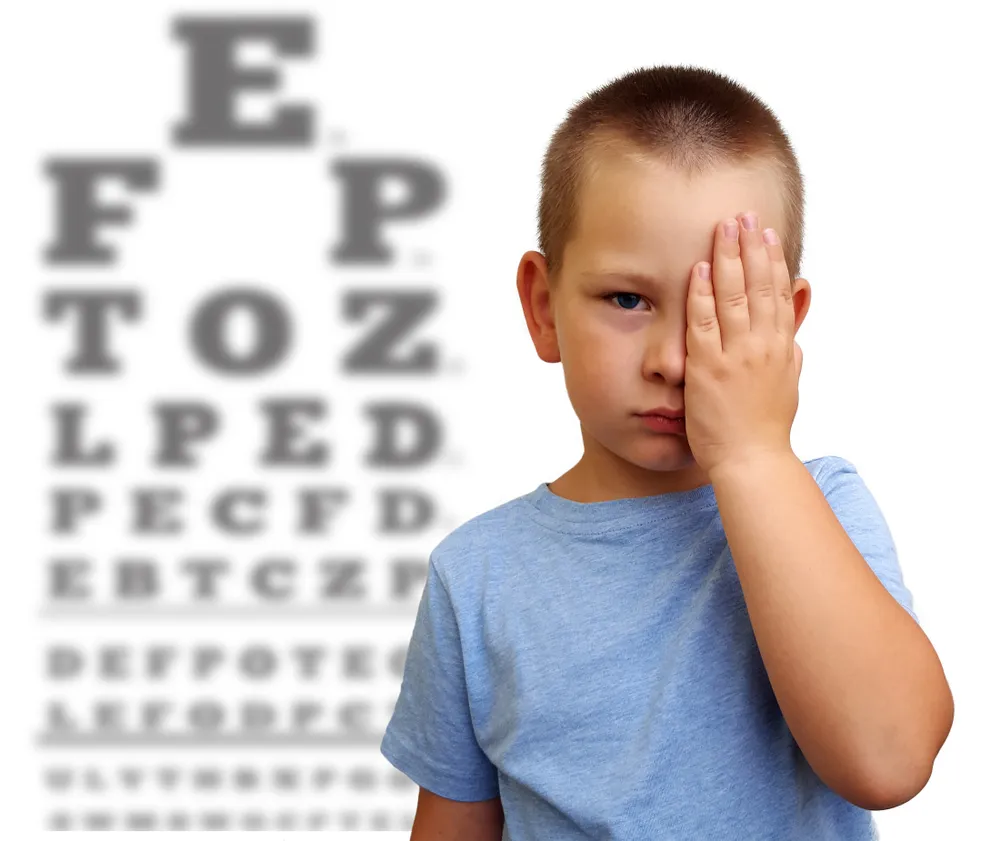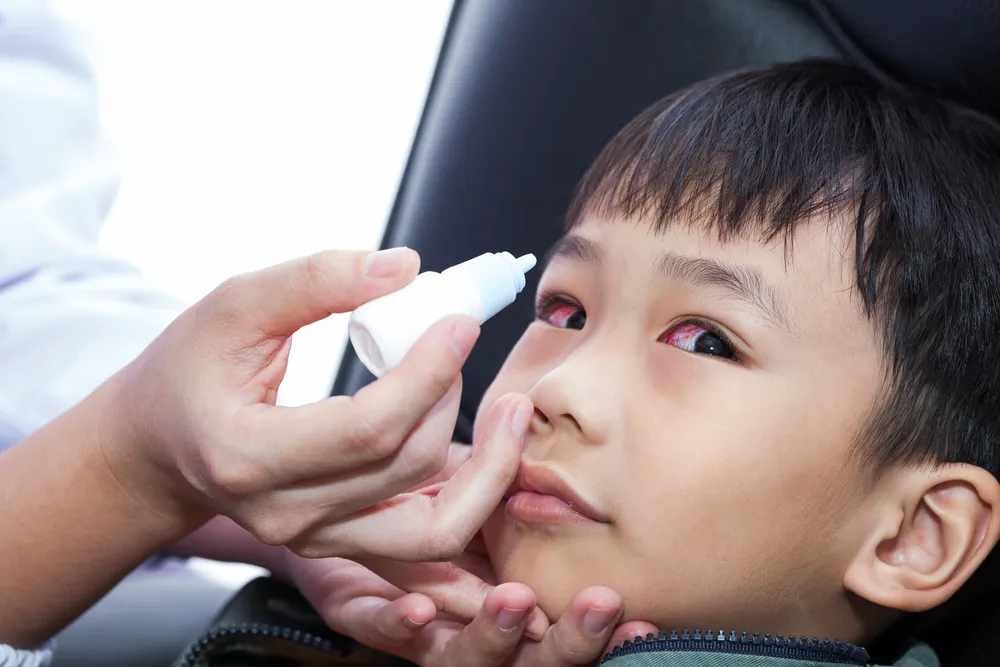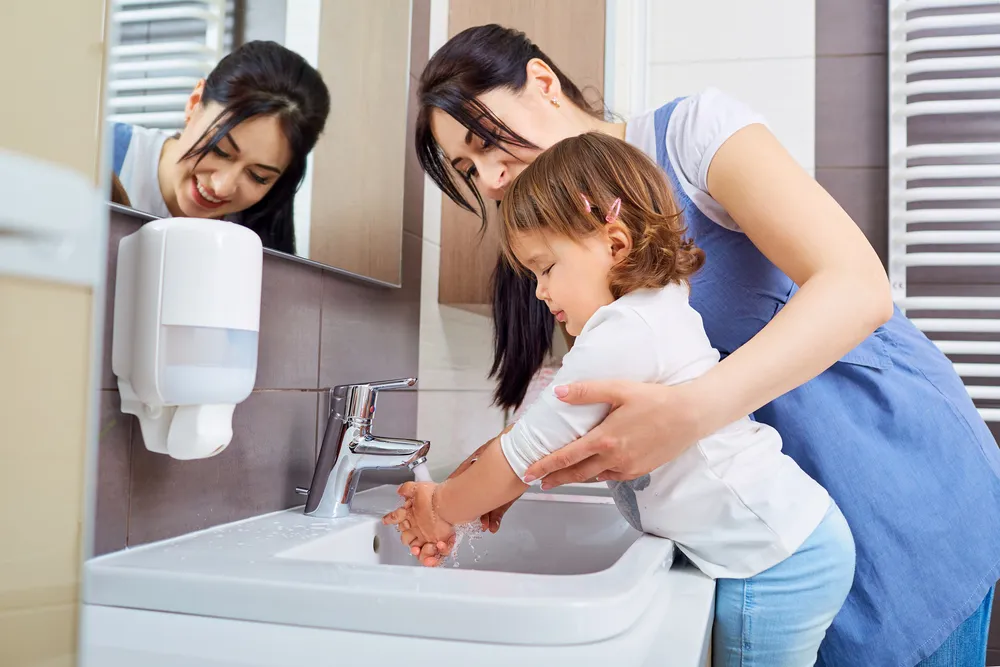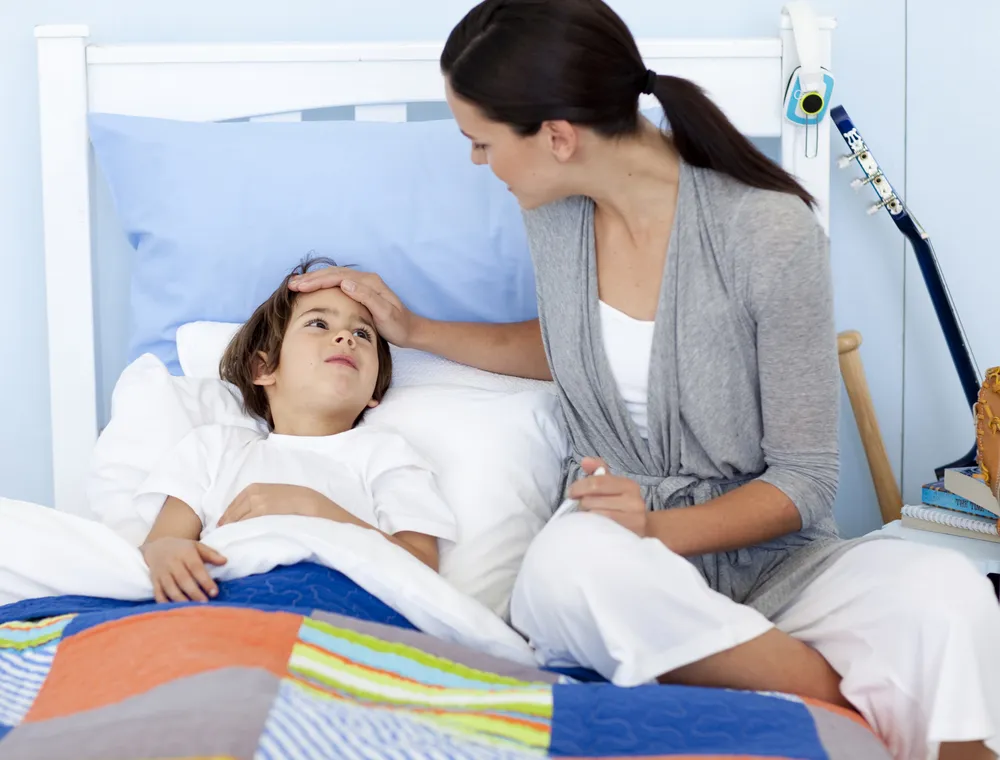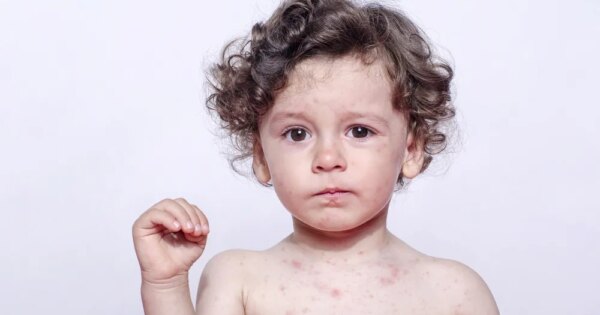When your child comes home with pink, watery eyes, it doesn’t take long for most parents to self-diagnose pink eye. Pink eye, or Conjunctivitis, is an inflammation of the clear tissue that covers the white part of the eye, the conjunctiva. The conjunctiva lines the inside of the eyelid and while pinkeye isn’t serious, it is super contagious, especially among school children – and their parents! Even pets can be susceptible to pink eye and, while not species specific, though animal to human transmission isn’t likely. They key to containing pinkeye is to treat it quickly before it spreads. Regardless of your child’s age, if pinkeye is going around, it’s important to be vigilant about hand washing, checking for symptoms and treatment. Most cases of conjunctivitis are mild and will go away without any lasting problems. Here are nineteen things to know about pink eye.
Types of Pinkeye
19. Infectious Pinkeye
When we think of pinkeye, we think of an infection that can spread like wildfire in a classroom. This kind of pinkeye is often caused by the same bacteria and viruses found in colds, ear infections and sore throats. Viral pink eye generally starts with a watery discharge in one eye, and then moves to the other resulting in both eyes being infected. Bacterial strains of pink eye usually secret thick mucus or pus, and often only infect one eye.
18. Noninfectious Pinkeye
Believe it or not, some forms of pinkeye are not actually infectious. These are common in people with seasonal allergies to ragweed, pollen or grass. Other environmental triggers can include animal dander, dust mites, or mold. Anything that irritates the eyes can bring on conjunctivitis, including swimming in chlorinated pools or breathing in air pollution.
17. Pinkeye in Newborns
Ophthalmia neonatorum is conjunctivitis in newborn babies. It is a severe form of pinkeye that can be passed through the birth canal if the mother has a sexually transmitted disease (STD). To be safe, doctors give antibiotic eye drops to all babies when they are born to prevent permanent eye damage or even blindness.
16. Giant Papillary Conjunctivitis
This type of pinkeye is not contagious, but is linked with long-term use of contact lenses or artificial eyes. It can be caused by an allergic reaction to having foreign matter in the eye. Contact lens wearers should always follow eye doctors’ instructions and never over-use their contacts.
Symptoms of Pinkeye
15. Red Eyes
When the whites of the eye turn red, or pink, it’s a sign that pink eye may be present. This is where the disease gets its name! The inner eyelid may also show signs of redness.
14. Tears
Everyone’s eyes water at a different rate. If you notice your child’s eyes are especially teary and have ruled out allergies, it may be a sign that conjunctivitis is present.
13. Discharge
If your child’s eyes are glued shut, especially after sleep, you may notice a thick yellow discharge crusting over the eyelashes. Discharge that is green or white may also be pus or mucus and signify pinkeye.
12. Irritated eyes
Some children may describe feeling like they have sand in their eyes. Itchy and/or burning eyes are quite common in people with pinkeye.
11. Vision
Blurred vision or sensitivity to light can also be associated with pinkeye, especially these symptoms are combined with the tell-tale pinkness of the conjunctiva.
Diagnosis
10. At home
If you notice that your child presents with symptoms of pinkeye, from irritated and red-looking eyes, to overall general discomfort, you can use warm or cool compresses to help with relief. Clean the eye carefully, especially around the edges of the eyelids, to remove any discharge before applying disposable or washable compresses.
9. At the doctor’s office
It is advisable to contact your health care practitioner at the first signs of pinkeye. While it may not always be conjunctivitis, it is important to see your doctor for diagnosis in order to contain pink eye and to rule out something more serious.
Treatment
8. Viral
Just like the common cold, viral pink eye must run its course. Antibiotics will not work as a “cure” for this type of conjunctivitis. The itchy, irritating symptoms may last several days, but usually viral pink eye clears up within a week.
7. Bacterial
Bacterial pink eye is usually treated with a course of antibiotic eye drops, ointments or pills. Even if symptoms dissipate, continue with the course of treatment as prescribed. Bacteria can be spread through contact with both individuals and surfaces so be sure to wash hands a lot!
6. Allergies
Pink eye caused by allergies is treated with oral antihistamines and eye drops. Because allergy medication can sometimes dry out eyes, artificial tears can help. Not only do they rehydrate the eyes, but they can dilute the allergens. If your child suffers from allergies, be sure to try to avoid rubbing the eyes to contain any infection.
Prevention
5. Hands
It cannot be overstated enough: wash your hands! And your children’s hands! And their friends’ hands. Use soap and warm water and wash hands often to prevent picking up pinkeye from someone else, and to stop it spreading to others. Sometimes pink eye can go from one eye to the other so be sure to avoid touching your eyes.
4. Eyes
Keep eyes clean by wiping away any discharge with fresh cotton or paper towels. Do not reuse any materials and be sure to discard them. If you are using cloths be sure to toss them straight into the hamper after use.
3. Linens
Wash pillowcases and towels in hot water daily until the infection has cleared up. Do not share pillows, towels or washcloths. Even teddy bears or favorite stuffies should be kept clean to minimize the spreading of pink eye.
2. Wearing and Sharing
Never over wear contacts and do not share makeup. This is how infections spread. Clean all lens cases and makeup brushes or, better yet, avoid using contacts or wearing eye makeup until the pinkeye has cleared up.
1. Stay home
It’s best to keep your child home from school or daycare until their symptoms have disappeared. This protects other children and helps them to maintain good hygiene at home rather than spreading pink eye back and forth!


